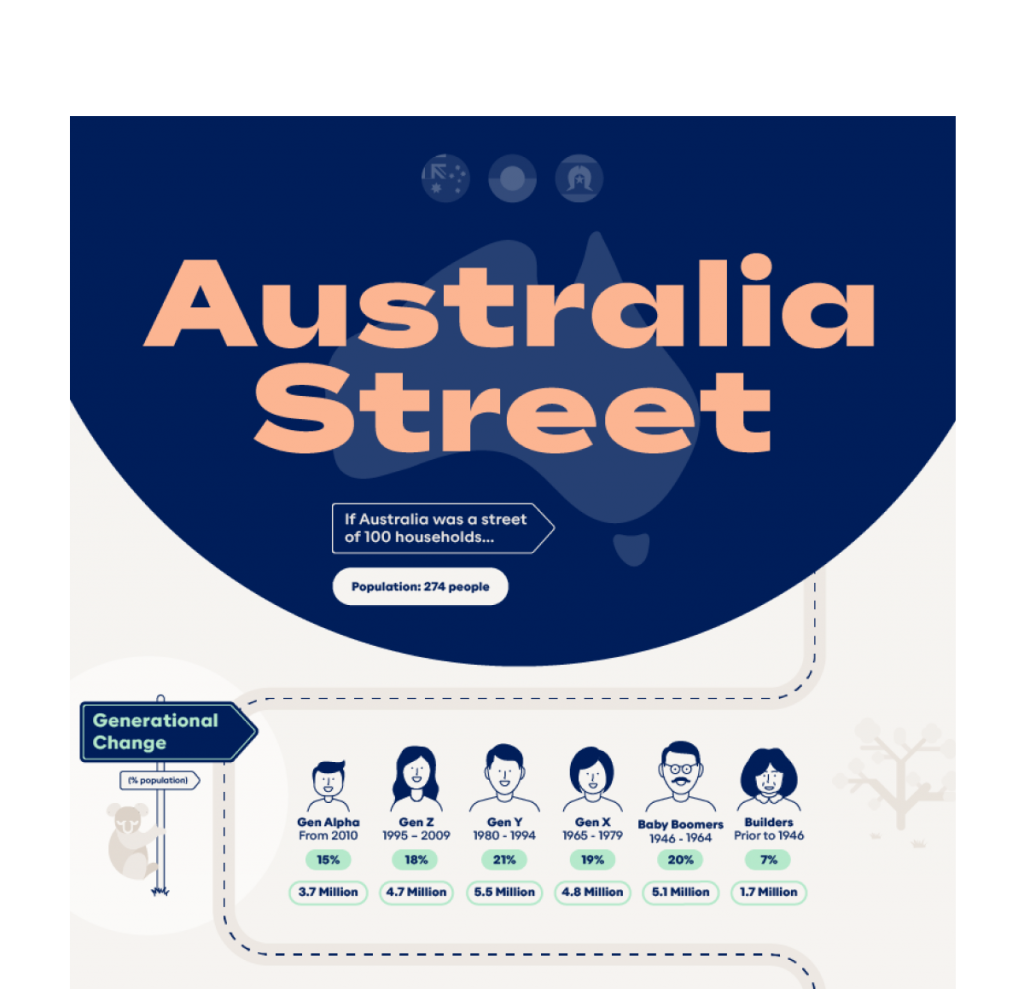By: McCrindle
Between shorter attention spans and more diverse communities, communication isn’t getting easier.
But great leaders know the importance of effective communication and are prepared to learn and adapt.
Alongside cultural changes, there has also been plenty of generational change with more Gen Ys than Boomers now comprising Australia’s population. While the longevity boom is continuing, younger generations have an opportunity to demonstrate greater cultural intelligence by building on the learnings of previous generations.
Cultural diversity – Traditional and Emerging Communities
The latest ABS Census revealed that more than one in four Australians were born overseas (28%), and almost one in two Australians have a parent born overseas (48%). Not only does Australia have a very new community forming, but it also has one of the world’s oldest communities growing. The ATSI community saw growth to over 810,000 people in the 2021 Census, up from 550,000 back in 2011. This important community is now almost twice the size of Canberra’s population.
Steady Growth in Cultural Diversity
There has been a steady increase in cultural diversity in Australia over the last two decades.
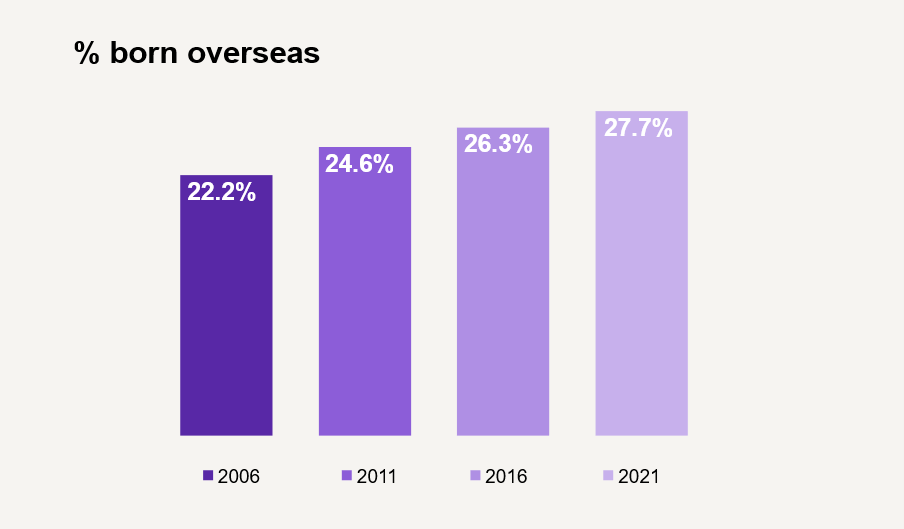
India-born Residents Increase as European-Born Decline
Geo-political tensions and border closures are just a few of the factors influencing migration patterns and how the top countries of birth for Australians have changed in the last five years. India has risen to 3rd place now, passing New Zealand and China. These countries are still behind England and Australia as the top countries of birth.
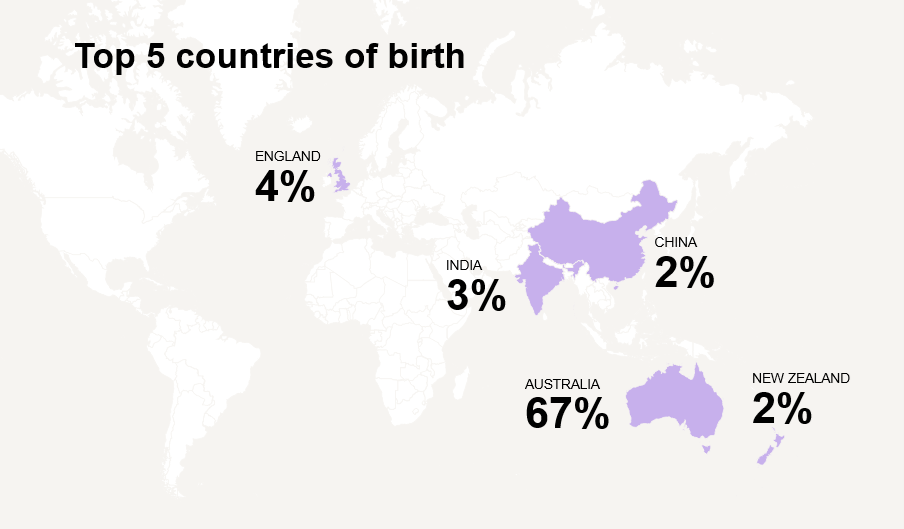
The migration shift is now showing reduced distance in migration patterns, with the shift from European migration during the last century to Asian migration trends this century. According to the latest Census, the top five largest growing communities all come from Asia. Australia’s Indian community grew by 3.5x more than the Nepalese community over the last five years, which is equivalent in growth to the size of Hobart!
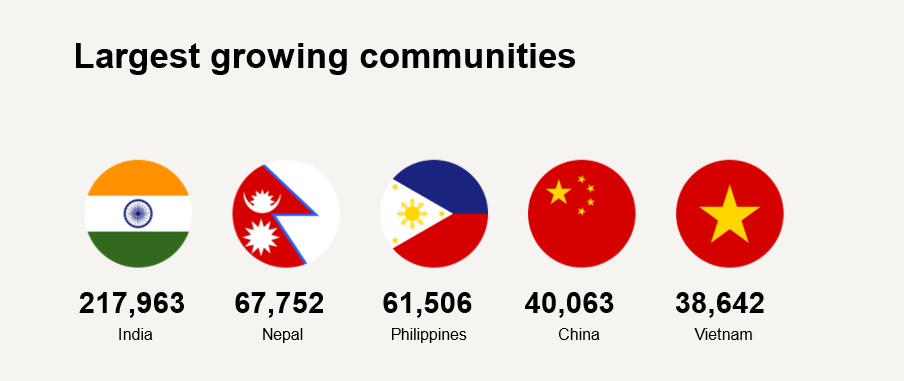
When it comes to the fastest growing communities though, Nepal beat India, growing 2.5x faster and revealing the quick rise of Australia’s Nepalese community over the last five years.
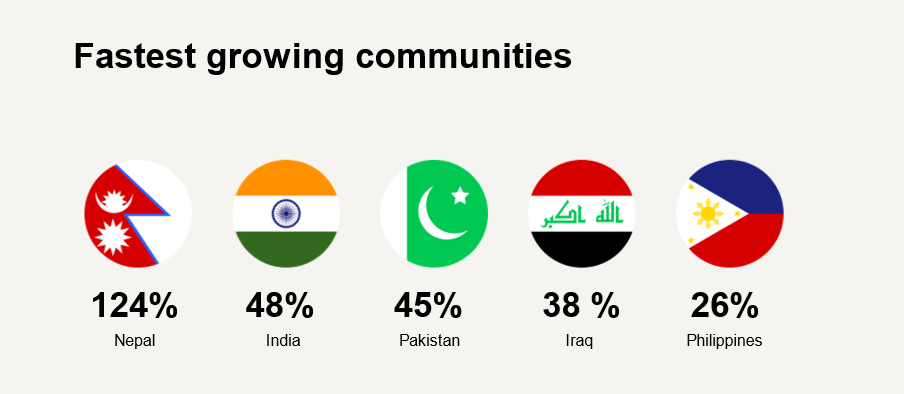
The declining countries of birth in Australia are led by European countries with over 10,000 fewer Italian people in the last five years.
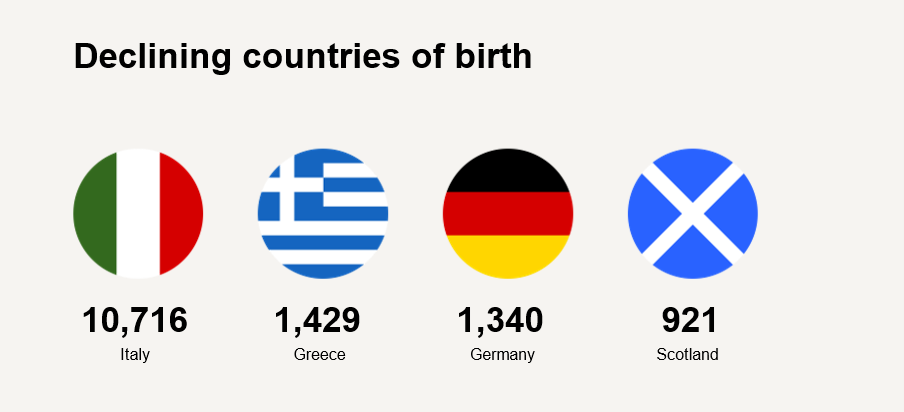
‘No-Religion’ Grows in a Multi-Faith Society
When it comes to understanding people in a community, one interesting facet is to learn how people see the world. Worldview is largely shaped by religious affiliation and while religion in Australia is increasingly becoming a personal topic rather than public one, leaders must understand and engage with the variety of worldviews in the Australian community.
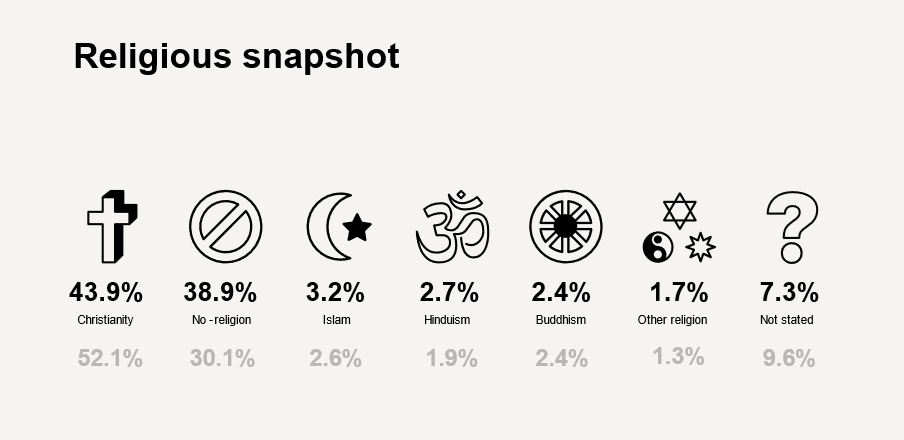
Even with almost two in five Australians identifying with no religion (39%), religious affiliation (or its lack thereof) plays an important part in defining a person’s worldview. The affiliation of individuals affects their view of almost everything in life from the environment to community, to finance and borrowing, and even their personal mental, physical, emotional and overall wellbeing. Whether it is the devotion of daily prayers for followers of Islam or the belief of reincarnation for Hindus, each belief and behaviour reveals what segments of society value and prioritise.
The Pace of Communication in an Era of Varied Worldviews
So how do you get your message across amidst so many differing worldviews? Stephen Covey wisely outlined the importance of listening first, speaking second when he said, ‘Seek first to understand, then be understood’. Listening to community segments to understand values and priorities will help leaders understand how to communicate effectively. Getting important messages through to new, growing and changing community segments is the result of effective communication, not the first step. Listening to learn, precedes speaking to inform.
As Australian homes increasingly speak a language other than English, building trust, demonstrating empathy and pursuing cultural intelligence will be a cornerstone of successful leadership in this VUCA (volatility, uncertainty, complexity, ambiguity) era.
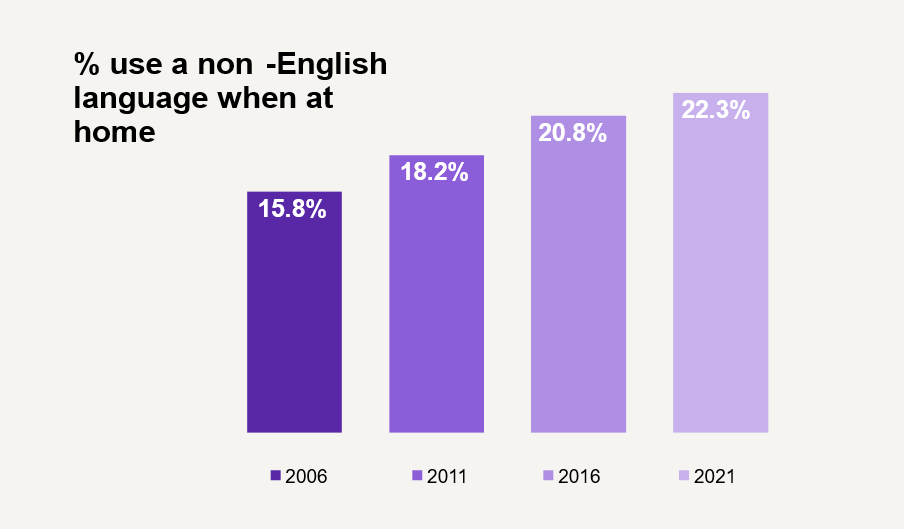
“Everything moves at the speed of trust.” ~ Stephen Covey
Article supplied with thanks to McCrindle.
About the Author: McCrindle are a team of researchers and communications specialists who discover insights, and tell the story of Australians – what we do, and who we are.
Feature image: Photo by Markus Krisetya on Unsplash










